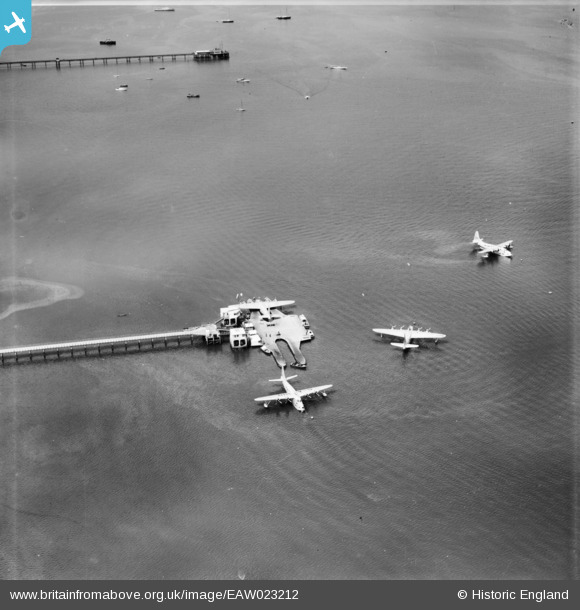
The Hythe Pier Railway, pier head station. 'The 1878 Act of Parliament made provision for the construction of a tramway along the pier, although one was not originally laid. The trucks that carried luggage along the pier were found to be damaging the pier decking, and in 1909 a narrow gauge railway was constructed on the northern side of the pier to replace them. The vehicles were hand-propelled, and the track was laid flush with the pier decking.
In 1922, the current electrified railway was constructed on the southern side of the pier. The track is laid to 2 ft (610 mm) narrow gauge and is electrified at 250 V DC by a third rail on the seaward side of the track. The line consists of a single track with no passing loops, with two non-electrified sidings at the landward end. One of the sidings enters the line's covered workshop. Stations, equipped with low wooden platforms, exist at both ends of the line. The pier head station has an overall roof, whilst the landward station has a ticket office and waiting shelter.
The line is operated by two four-wheeled electric locomotives built in 1917 by Brush with works numbers 16302 & 16307 (simply renumbered as No. 2 & No. 1 - the '7' looking like a '1'.[18][19]). They were originally battery powered, being used at the World War I mustard gas factory at Avonmouth. They were transferred to Hythe after the war, where they were converted to collect power from a third rail and had their batteries removed. There was initially a third locomotive, but it was used for spares and finally scrapped in 1935. All that remains of the 3rd tractor is the electric motor bearing the serial number "16304".
The line owns four bogie passenger coaches, two of which have a driving cab at their seaward ends. In normal operation the single train is made up of one of the locomotives propelling three passenger coaches, with a four-wheel flat car for baggage. The locomotive is always at the landward end, and the seaward passenger coach must have a driving cab. The line also has a four-wheel oil-tanker, used to carry fuel to the Hythe ferries.' Wikipedia, https://en.wikipedia.org/wiki/Hythe_Pier,_Railway_and_Ferry







![[EAW023212] A group of Short S.25 and S.45 Flying Boats by Hythe Flying Boat Base pier, Hythe, 1949](http://britainfromabove.org.uk/sites/all/libraries/aerofilms-images/public/100x100/EAW/023/EAW023212.jpg)
![[EAW023211] A group of Short S.25 and S.45 Flying Boats by Hythe Flying Boat Base pier, Hythe, 1949](http://britainfromabove.org.uk/sites/all/libraries/aerofilms-images/public/100x100/EAW/023/EAW023211.jpg)
![[EAW023209] A group of Short S.25 and S.45 Flying Boats by Hythe Flying Boat Base pier, Hythe, 1949](http://britainfromabove.org.uk/sites/all/libraries/aerofilms-images/public/100x100/EAW/023/EAW023209.jpg)